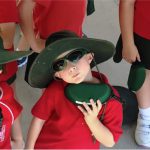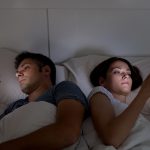It’s the first day of school.
Excitedly, you pack your five-year-old a healthy lunch in her new lunch box. There is a water bottle and a school hat. Absolutely everything is labelled.
However, you may have missed something vitally important to the success of your child’s first day of school.
Has your child had a simple eye examination with an optometrist?
At Optometry Australia we urge parents to ensure their child sees an optometrist before they start school.
An eye test may be the most crucial test a schoolchild ever takes, and ideally it should happen before a child starts school.
Approximately one in five Australian children suffers from an undetected vision problem, or requires ongoing assessment.
Add to this the alarming estimation from The Brien Holden Vision Institute at UNSW that myopia levels have risen in the past 15 years from 20 per cent of Australian 17 year-olds to about 30 per cent.
https://youtube.com/watch?v=FLUKJjo3wxQ
Why should your child have an eye examination?
Left undetected, vision problems can make school years difficult. Imagine your child sitting in a classroom and not being able to clearly see the blackboard or trying to catch a ball when they can’t clearly see the person throwing it.
Childhood vision problems can also be misdiagnosed as behavioural disorders.
While some signs of vision problems are obvious, others are hard to identify, and children at that age usually can’t tell there is anything wrong as they assume everyone sees the world as they do.
This makes it crucial for children to have a full eye examination with an optometrist before starting school and then regular visits as they progress through primary and secondary school, as part of their general health regime.
You can also protect your child’s eyes by advocating for your school to adopt sunglasses as part of its school uniform policy, like 10% of Australian schools.
Screen time linked to myopia (short-sightedness)
Issues such as an increase in ‘screen time’, with many children spending more time indoors on smartphones, tablets and computers, has been implicated in an increase in children with myopia (short sightedness) in recent years.
However, it may be lack of light rather than smartphone use which is the main contributing factor. Increasing exposure to outdoor light is the key to reducing the myopia (short-sightedness) epidemic in children, according to ground-breaking new research by Australian optometrists.
Optometrist and lead researcher on the project, Associate Professor Scott Read, who is the director of research at QUT’s School of Optometry and Vision Science, said that children need to spend more than an hour and preferably at least two hours a day outside to help prevent myopia from developing and progressing.
Some signs of vision problems in children can include:
- Noticeable tilting or turning of the head when the child is looking at something
- Frequent blinking or rubbing of the eyes
- Red or watery eyes
- Difficulty reading, such as skipping and confusing words, and holding a book very close while reading
- Complaints of headaches and blurred or double vision
- Squinting or having difficulty recognising things or people in the distance
- One eye turning in or out while the other points straight ahead
Find an optometrist
Optometry Australia recommends that all children have a full eye examination with an optometrist before starting school and regularly (every two to three years) as they progress through primary and secondary school.
You can search for one in your area here.






